STL312: Sharp? If it glint, it in’t!
Andrew Hunter joins Vic and Ben to discuss sharpening, carpeted workshops, and one listener's dining table issues. Amanda talks to Sophie Glenn, a metalworker/woodworker who you should know!Andrew’s class at Wendell Castle Workshop
How do you measure sharp?
From Dave:
How do you measure sharpness – in a normal home shop atmosphere? I’ve heard and seen lots of methods; shave hair off of your arms, carve a sliver off of your fingernail, slice a piece of paper without “sawing” and see if you can shave end grain. Are there more measurable or repeatable approaches that don’t require an electron microscope?
Love the show, it gets me to and from the office most days. I have a notepad on my armrest to write down techniques, tools, tips, books etc. that catch my ear. It is becoming an expensive notebook.
Sophie Glenn
Check out Sophie Glenn’s work at her website or on Instagram.
Shop organization
Carpet in the workshop?
From Fred:
I will be moving to the Atlanta area this summer. Many homes here have “daylight basements” with at least one exterior door and several windows. Pretty sweet for a potential woodwork shop. The basements in many of the homes that I am previewing on real estate websites have already “been finished out”, often with insulated exterior walls, drywall, and carpeting installed. I recall an STL discussion on shop flooring, mostly as regards what to do as an alternative to bare concrete. I think Mike P made a half-joke-half-serious comment about carpeting. It is likely that the house I buy will have finished space in a walkout basement that will be larger than my present single-bay garage shop. My question: if you had the option to leave the carpet in place, would you? This question applies to an area for a table saw, bandsaw, workbench, and assorted benchtop machines, I also have a large lathe. For my turning area, I would remove the carpet and install a shop curtain around the turning zone to contain the shavings and make sweeping easy.
Mismatched walnut woes
From Mike:
I am a double bass bow maker by trade and furniture making is a hobby for myself. A few years ago I made myself a dining table and at the time I did not understand the difference between steamed and non steamed walnut or that that was even a thing. The majority of the wood I bought was super cheap at an estate sale, either air-dried or at least not steamed. I needed one extra piece for the top to be as wide as I wanted, which I got from the local lumber yard and it was steamed. Since I finished the table a few years ago, every day I look at the one strip of comparably ugly brown steamed walnut down the middle of the top sandwiched between the beautiful nonsteamed boards.
I have considered one day taking the top off the table and cutting out and replacing the steamed board. This would be straightforward but the issue is that the top is attached via sliding tapered dovetails. I luckily only glued the last few inches with hot hide glue, so getting it out would be a pain, but not impossible.
How do you recommend I go about cutting the new tapered dovetail in the new piece of wood as well as making sure everything stays aligned?
I made a jig specific for this project years ago to cut the slot and most likely have scraped it. I guess it doesn’t need to be perfect and could honestly probably be a straight non-tapered groove as long as it does not interfere with the dovetail slot on the other boards although it could be difficult to make sure everything stays aligned when gluing up so I can slide the tail into the socket on the other end of the new board. It may be easier at this point to make an entire new top rather than replace just one piece.
I will most likely decide to live with it and let it be a lesson learned about wood choice but figured I would send the question to hear you all discuss it in case it could be more doable than I am imagining. I have attached a couple of pictures for reference.
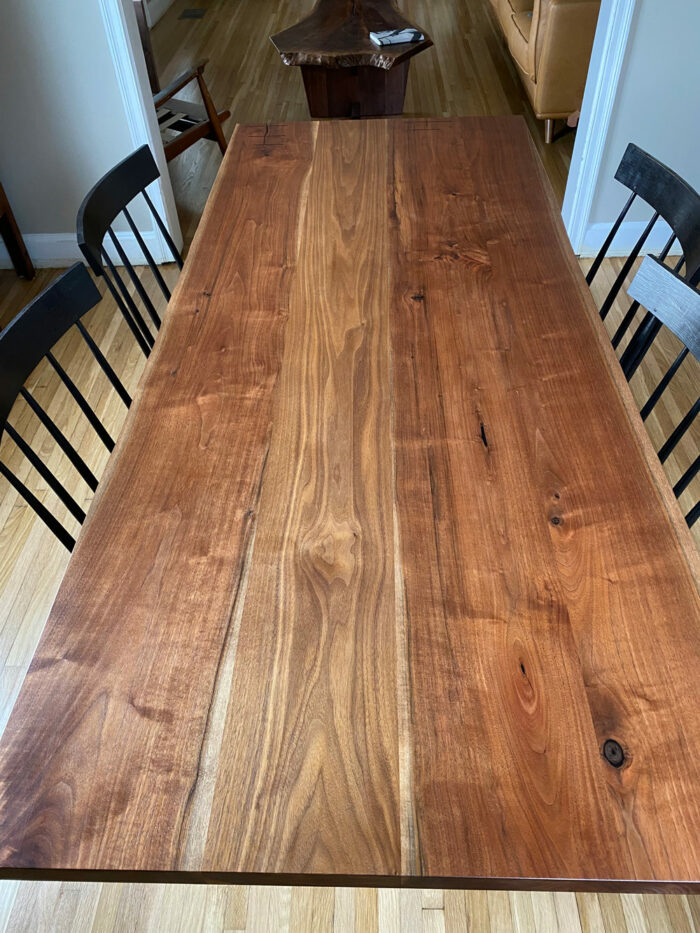 |
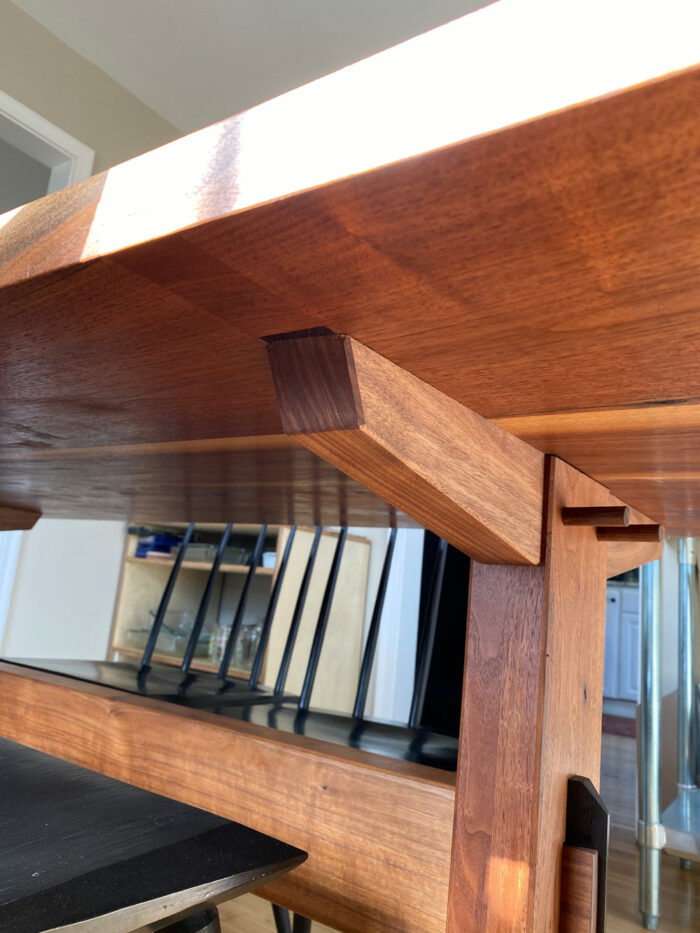 |
Every two weeks, a team of Fine Woodworking staffers answers questions from readers on Shop Talk Live, Fine Woodworking‘s biweekly podcast. Send your woodworking questions to [email protected] for consideration in the regular broadcast! Our continued existence relies upon listener support. So if you enjoy the show, be sure to leave us a five-star rating and maybe even a nice comment on our iTunes page.
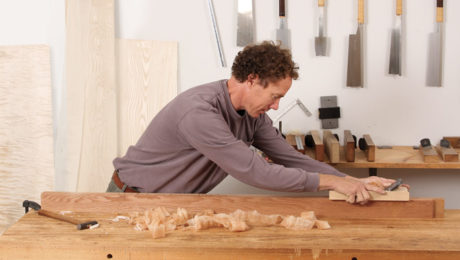
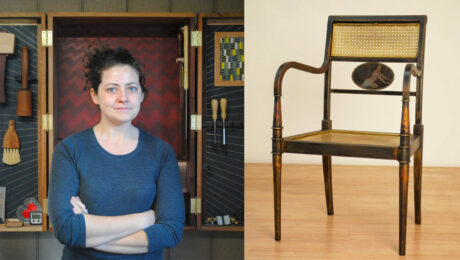
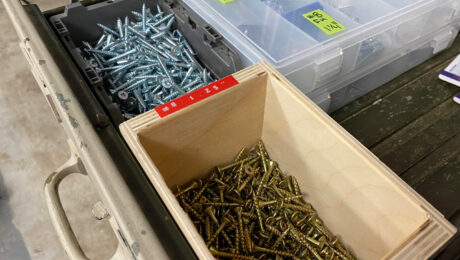
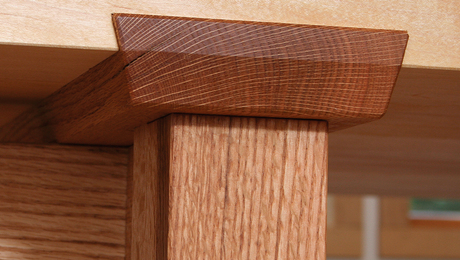






















Comments
Great episode as always and enjoyed the Amanda's interview with Sophie Glenn. A nice change of pace from the usual format.
I feel Mike's pain with the mismatched boards on the tabletop. I made a desktop and needed a bit more width so I used a narrow board to make it up. It drives me nuts that the three boards aren't the same width. And yes, my wife thinks I'm nuts for letting it bother me.
Yo Vic! Which portable drill jig do you have?
(I had one in the past the was garbage, would love to know one that works well.)
I think if he's going to bite the bullet then maybe finding a matched set of boards to make an entire new top might be simplest. Could use the old top for lumber in another project.
Add color to the mis-matched board.
Tape off and spray it with tinted aerosols. Or using French polish techniques apply color. There are many ways to add color. People more knowledgeable than I chime in.
Listening to this episode took my handplanes from sometimes sharp to always sharp. Thank you for the “no glint” tip. It’s an absolute game changer for me. At first, I couldn’t see what Andrew and Vic were describing, but after three or four sharpenings I finally saw it. And once I saw it, I kept seeing it. No more feeling for the burr and shaving my arm hairs. Once the glint is gone, I know my tool is as sharp as I can get it on my stones. Thank you!!!
Log in or create an account to post a comment.
Sign up Log in